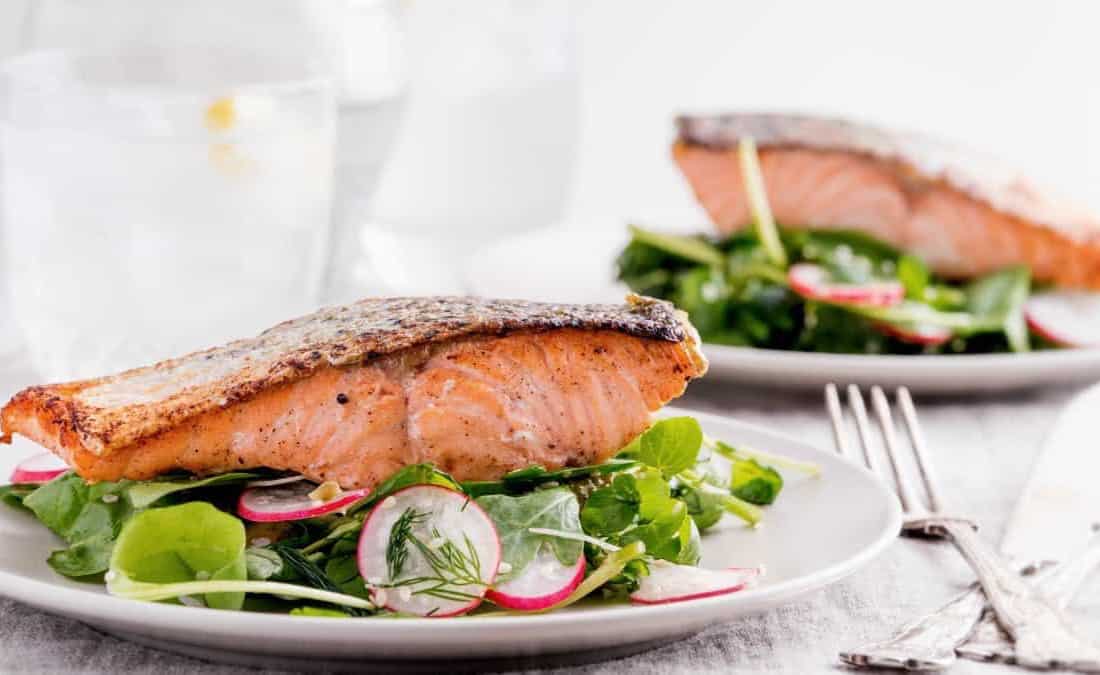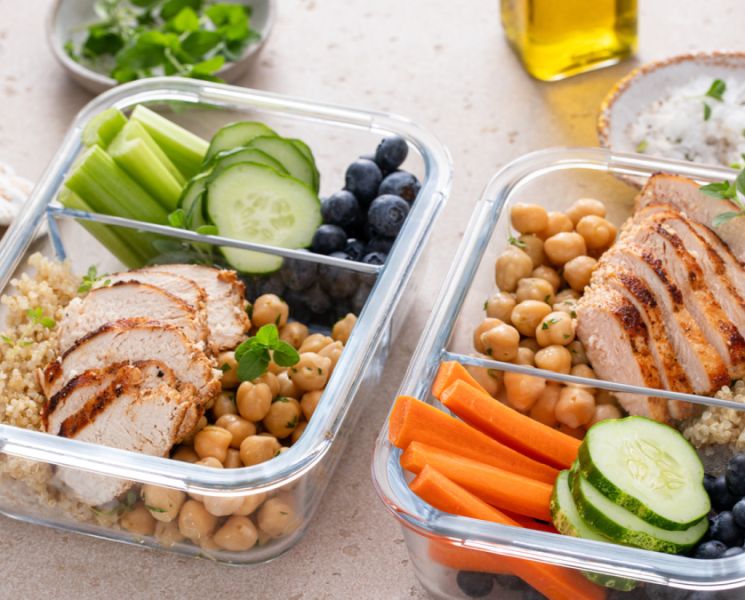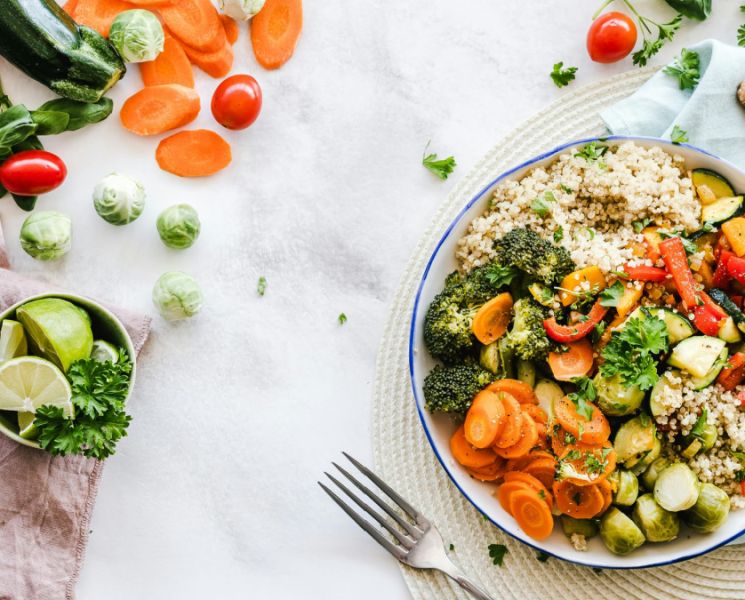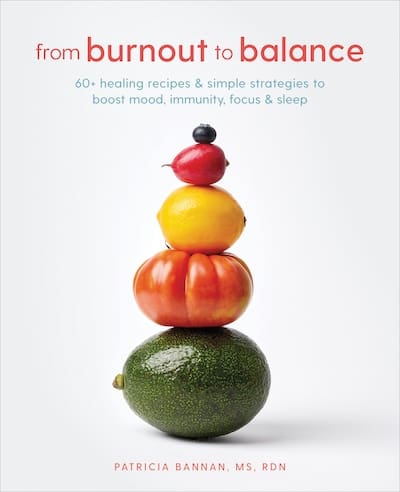Frozen foods can be packed with sodium and other preservatives, while also leaving you feeling hungry. Follow these 10 tips to choose healthy and satisfying frozen foods that taste good and are good for your health!
The frozen food aisle is heating up! With frozen food companies revamping their products to include more healthful, flavorful, “real food” ingredients, consumers are responding. For the first time in five years, the healthy frozen food market is growing. However, there are a few key things to keep in mind when visiting the grocery store.
Check out my TV segment “Frozen Meals are Back in Style” with ABC-7 Los Angeles.
Today, thanks to the variety — vegan, natural, gluten-free, organic, and even artisan — there is truly something for everyone in the frozen food aisle. However, the challenge remains to choose the healthy frozen meals that will satisfy your hunger and fuel your body properly — without the excess sodium and junk. The good news: is it is possible with a few helpful tips. In fact, research shows when chosen wisely, frozen foods can be just as healthful, if not more so, than their fresh counterparts.
Here are ten tips on selecting the healthiest frozen foods for you and your family.
- Aim for >5 grams of fiber.
- Aim for >15 grams of protein.
- Keep sodium <600 milligrams.
- Buy plain frozen vegetables and season them yourself.
- Choose unsweetened, 100% frozen fruit.
- Limit breaded and fried foods.
- Choose sustainable, low mercury fish.
- Look for balance.
- Take a look at the calories.
- Review the ingredients list.
1. Aim for >5 grams of fiber.
When selecting frozen meals, try to choose options that have at least 5 grams of fiber per serving. This will help with gut health and keep you feeling fuller longer, which means less snacking in-between meals. Meals that offer vegetables, whole grains, legumes, and other plant-based proteins will have a fiber boost.
2. Aim for >15 grams of protein.
Protein not only helps build strong muscles, bones, skin, and blood, it plays a role in immune health and helps keep fluid levels balanced. Aim for healthy frozen meals that have at least 15 grams of protein. Spacing out your protein intake throughout the day can help you maximize absorption. Plus, having an adequate amount of protein in your diet will increase satiety and help with weight management.
3. Keep sodium <600 milligrams.
Consuming too much sodium can put a strain on your heart, kidneys, and cause bloating. To give your body a break (and reduce water retention), a good guide is to select meals with fewer than 600 milligrams of sodium per serving.
4. Buy plain frozen vegetables and season them yourself.
Frozen vegetables in sauces and cheeses can be high in calories and sodium, so buy plain frozen vegetables and season them yourself at home. They will probably taste better, too! Here are 8 salt alternatives that will give your food some extra flair.
5. Choose unsweetened, 100% frozen fruit.
Frozen fruit, which is picked, and flash-frozen at the peak of ripeness, can be even more nutritious than fresh. The key is sticking with 100 percent fruit; avoid products with added sugar or syrups. Some of my freezer favorites include frozen mixed berries, mango, and pineapple, which are perfect to blend up a quick smoothie.
6. Limit breaded and fried foods.
While they may taste good, fried and breaded foods add excess calories, sodium, and fat to the meal. Instead, choose plain chicken or fish from the freezer aisle that you can sauté, bake, or grill at home with fresh herbs and spices for added taste and nutrition. If you’re not in the mood to cook, opt for a 100% plant-based meal that has lots of vegetables included.

7. Choose sustainable, low mercury level fish.
When it comes to choosing frozen fish, go for more sustainable options that have lower mercury levels, such as salmon, tilapia, shrimp, and oysters. The Dietary Guidelines recommend eating two servings of fatty fish per week for brain, eye, and heart health. Frozen options can be a convenient and budget-friendly way to get more seafood in your diet. See what seafood choices are lowest in mercury and best for the ocean at the Monterey Bay Aquarium Seafood Watch program.
8. Look for balance.
To get the most out of your frozen meals, select choices that give you a good balance of vegetables, whole grains, and lean protein. This will help give you the best bang for your nutrition buck while still satisfying your taste buds. Look for whole-grain ingredients like brown rice, barley, farro, and quinoa or starchy vegetables like sweet potato, squash, and corn for quality carbohydrates to keep hunger at bay. Healthy frozen foods can be simple dishes you’d otherwise make yourself, but don’t have the time or energy to do.
9. Pay attention to the calories.
To keep a handle on your calories, choose a meal that contains about 400-500 calories, or to personalize it, about a quarter of your daily calorie needs (assuming you eat three meals a day and one or two small snacks). Here is a table for estimated calorie needs per day. For personalized recommendations, it’s best to meet with a Registered Dietitian.
A lot of frozen diet meals are also low in calories, which will likely leave you feeling unsatisfied and reaching for more food after. If the frozen meal is on the smaller side, you can always pair it with a side dish or salad.
10. Review the ingredients list.
Before you add anything to your cart, glance at the ingredients list. Are there items you don’t know or can’t even pronounce? This may be a good indication that you can find a better product. Avoid frozen foods with a lot of added preservatives or unnecessary ingredients. Typically, the shorter the ingredients list, the better.
What are your favorite healthy frozen foods? Comment below!





